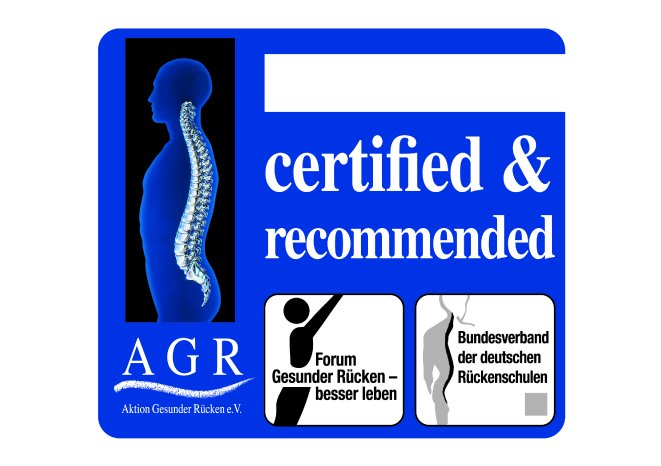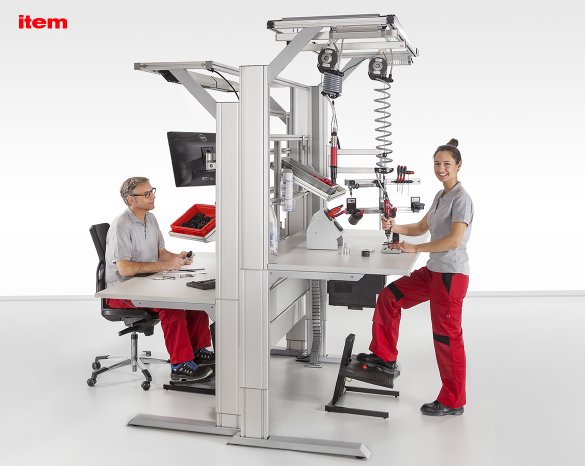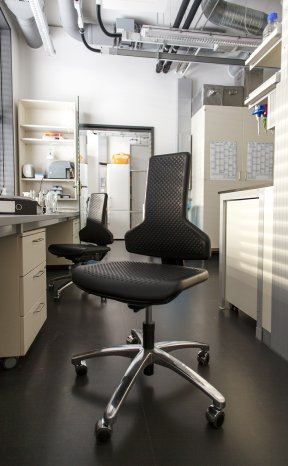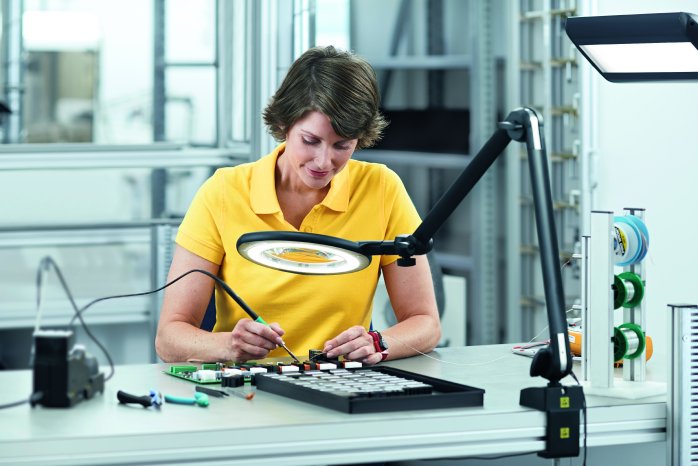Back-friendly workplaces for more efficient working and better health
About 5.3 million people in Germany work in an industrial workplace. Aspects such as back-friendliness and ergonomic design are often ignored with detrimental long-term effects on health: in the end, the company will find that this just doesn't pay. After all, it is long proven that the right working posture is not only good for the back but enhances productivity and creativity as well. It also reduces the number of days off sick resulting from disorders of the musculoskeletal system. And that's not all: demographic change is causing a constant increase in the average age of the working population. It is becoming apparent that there is a need to make a contribution to the (back) health of the workforce.
What distinguishes the industrial workplace from the office?
Ergonomic workplace design is important in both settings. But what is the main difference between the two? In detail, a back-friendly industrial workplace has to fulfil other criteria going above those prevailing in the office situation. While desk staff work almost exclusively at the computer, the industrial worker usually has a far wider action radius. Flexibility is particularly important for coping with frequently complex but also monotonous work procedures that can put a strain on the body. In addition, safety is of increased significance in the industrial workplace. Several components play an important role here that go beyond the desk/chair/computer screen arrangement. It's the overall concept that counts.
What makes an industrial workplace ergonomic?
Which criteria does an industrial workplace have to fulfil to receive the AGR seal of approval? Basically the various components of a system must permit ergonomic work postures and procedures when viewed in isolation and in the system context. There are three essential areas here: the chair/seat, the work bench and also the lighting. As far as the chair is concerned, this must be as flexible as possible, as in the office workplace, and support changing sitting positions. It is also advisable for the chair to be slightly tilted forwards with an active seat and other individual adjustment possibilities to encourage what is called dynamic sitting. The material of the chair should be coordinated to the workplace and to the particular activity. In a workshop, robust polyurethane is usually chosen for the seat and back upholstery, while imitation leather is preferred in the laboratory setting.
Special standing seats are an alternative to just sitting; here again the upholstery should be chosen to suit the specific requirements.
The work bench should be easily adjustable in height and have different height settings depending on the specific activity to permit a changeover between standing and sitting work postures. The so-called handling area is another important aspect. All required parts, tools and all accessories can be organised to be in the worker's immediate reach. Unnecessary strains and incorrect movements are to be avoided at all costs. Practical additions to the work bench include various storage shelves, brackets and tool holders.
The lighting is another aspect that needs due consideration as it has a direct impact on performance and concentration and also an indirect influence on posture. Workers who cannot see properly will subconsciously alter their posture to improve their vision, even if this is definitely not good for their backs. Optimum lighting in the workplace is therefore indispensable. In other words, the lighting must be homogeneous without glare or shadows to prevent the constant need to correct the posture in the search for the best light to work in.
The AGR seal of approval for the industrial workplace concept
The Campaign for Healthier Backs has awarded its AGR seal of approval to various industrial chairs made by Dauphin, work bench systems by item Industrietechnik and lighting solutions by Waldmann. Together with ergonomic criteria, due consideration was also given to safety and practical aspects. A successful combination of these elements results in a holistically back-friendly, safe, productivity-enhancing workplace. It is definitely worth while thinking and acting in overall concepts in the interests of health and motivation. An ergonomic overall concept can even help to reduce absenteeism caused by sick leave.
For more information on the industrial workplace concept, go to http://www.agr-ev.de/en/ under "Industrial workplace"“





